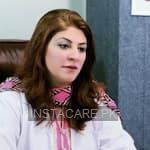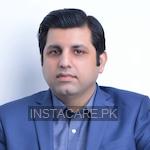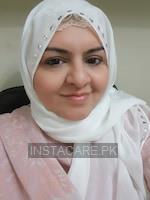Acne - Symptoms, Risk factors and Treatment
Last Updated On Tuesday, January 20, 2026
Acne in Urdu
ایکنی، جسے عام طور پر ایکنی ولگارِس کہا جاتا ہے، ایک ایسی حالت ہے جس میں آپ کی جلد پر وائٹ ہیڈز، بلیک ہیڈز اور پمپلز نمودار ہوتے ہیں۔ زیادہ تر وہ آپ کے چہرے پر پائے جاتے ہیں۔ تاہم، وہ آپ کی پیٹھ، کندھوں، بازوؤں اور سینے پر بھی ہو سکتے ہیں۔ یہ زیادہ تر نوعمروں میں ہوتا ہے لیکن دوسرے عمر کے لوگوں کو بھی متاثر کر سکتا ہے۔ علاج کے لیے، زیادہ تر حالات اس سے چھٹکارا پانے میں مدد کرتے ہیں۔ نیز، محرکات کو ہٹانے کے بعد یہ بہتر ہو سکتا ہے۔ اگر آپ ان کے ساتھ سختی سے برتاؤ کرتے ہیں تو مہاسے آپ کی جلد پر نشانات اور نشانات بھی چھوڑ سکتے ہیں۔ تاہم، اگر آپ ان کے ساتھ نرمی برتتے ہیں، تو ان پر دباؤ نہ ڈالیں، وہ خود ہی چلے جائیں گے۔ مںہاسی زیادہ تر دھول، گندگی، یا بیکٹیریا کی وجہ سے سوراخوں کے بند ہونے کی وجہ سے ہوتی ہے۔ اس کے ساتھ وائٹ ہیڈز، بلیک ہیڈز اور پمپلز بھی ہو سکتے ہیں۔
Acne in English
Acne, most commonly known as acne vulgaris, is a condition in which whiteheads, blackheads, and pimples appear on your skin. Mostly they occur on your face. However, they can also occur on your back, shoulders, arms, and chest. It occurs mostly in teenagers but can also affect people of other age groups. For treatment, mostly topical ones help in getting rid of it. Also, it may get better once the triggers are removed. Acne can also leave marks and scars on your skin if you treat them harshly. However, if you remain gentle to them, do not press them, they may go away on their own. Acne occurs mostly due to the clogging of pores due to dust, dirt, or bacteria. It can be accompanied by whiteheads, blackheads, and pimples.
If you have a complaint of acne, visit the dermatologist. Side by side with the medical treatment, you can also try home remedies that can help you to get rid of it by balancing the pH and oils of your skin.
Symptoms
The symptoms of acne may vary from person to person. For some, they may be severe, while for some, they are not. Acne vulgaris may show the following signs and symptoms
- Closed clogged pores- whiteheads
- Open clogged pores- blackheads
- Papules- small red tender bumps
- Pimples- pustules filled with pus
- Nodules- large solid pus-filled lumps under the skin
- Cystic lesions- painful lesions or lumps filled with pus under the skin
Risk Factors
The main risk factors for acne are:
- Excess oil (sebum) production
- Hair follicles that are clogged by oil and dead skin cells
- Bacteria attack the skin
- Inflammation due to various reasons
Things that may worsen acne can be;
Stress
Stress can worsen acne. However, it does not cause it, but it can exacerbate it.
Hormonal change
Androgens surge in boys and girls at puberty, which eventually leads to increased sebum production, may cause acne. Therefore, it is common in teenagers. Furthermore, in women it may also occur due to contraceptive use or pregnancy as they alter the hormone levels.
Medicines
Certain medications like corticosteroids, lithium, or hormonal drugs can worsen or exacerbate acne.
Diet
Processed foods and diets rich in oils and fats can also cause acne to worsen. Therefore, curtailing it may help in getting rid of it.
Prevention
Acne is the most common skin problem people report to dermatologists. To keep your skin free from it, follow these tips:
- Do not touch your pimples and face with dirty hands.
- Before touching your face, wash your hands.
- Do not eat oily fried foods.
- Eat a diet rich in antioxidants like fruits, vegetables, and nuts.
- Do not squeeze your pimples.
- Keep yourself hydrated. Drink at least 10 to 12 glasses of water in a day.
Conclusion
Acne, most commonly known as acne vulgaris, is a condition in which whiteheads, blackheads, and pimples appear on your skin. Mostly, they occur on your face. However, they can also occur on your back, shoulders, arms, and chest. It occurs mostly in teenagers but can also affect people of other age groups. For treatment, mostly topical ones help in getting rid of it. The symptoms of acne may vary from person to person. For some, they may be severe, while for some, they are not. It can also leave marks and scars on your skin if you treat them harshly. However, if you remain gentle to them, do not press them, they go away on their own.
Frequently Asked Questions
Acne meaning in Urdu is Mahasey (مہاسے).
The main cause of acne is a surge in hormones called androgens (specifically testosterone), which both women and men produce. Those hormones tend to be at their peak during the teenage and young adult years. Other causes of acne include sensitivity to these hormones combined with surface bacteria on the skin and fatty acids within oil glands, picking at acne sores, clothing and headgear, air pollution and certain weather conditions, using oily or greasy personal care products, and stress.
Acne is a dermal (skin) problem. It occurs when the skin pores get clogged with oil and the dead cells on the skin. Usually it appears in the form of pimples, blackheads, whiteheads, and cysts. Acne can be mild, moderate, or even severe.
There are several ways to remove acne, depending on its severity. Mild acne can be treated at home with over-the-counter medicines, such as benzoyl peroxide and salicylic acid, which are available in creams, gels, and spot-treatment pads. For more severe acne, a dermatologist may prescribe prescription-strength topical medications, antibiotics, or hormonal medications. Additionally, dermatologists may recommend chemical peels, laser or light therapies, or other procedures to remove acne.









